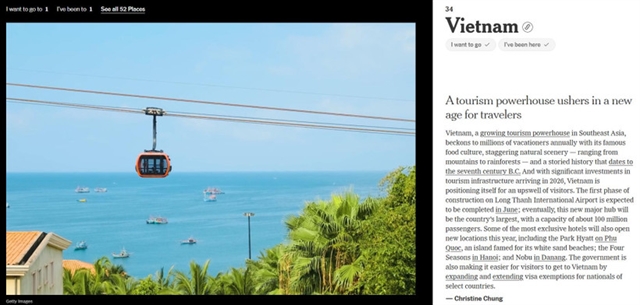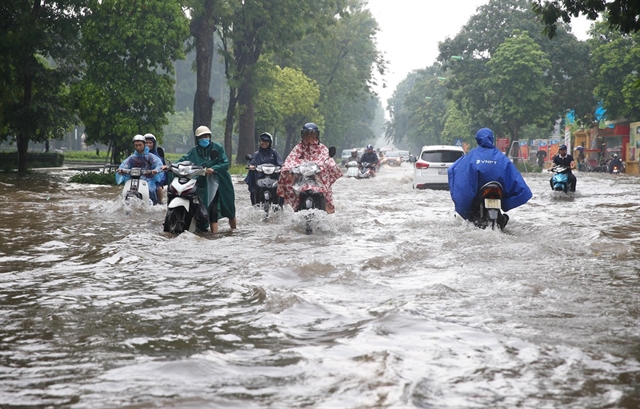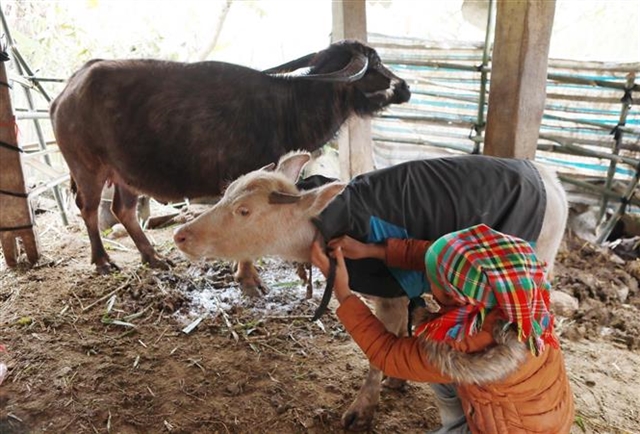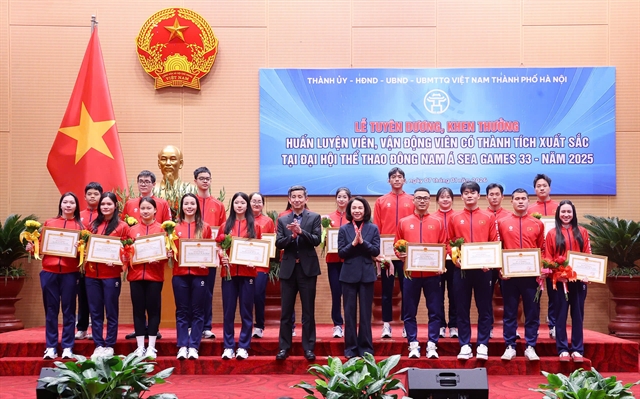 Opinion
Opinion


|
| Điện Biên Phủ Street in Hà Nội was inundated following heavy rains in 2019. — VNA/VNS Dương Giang |
Director of Hà Nội’s Deparment of Agriculture and Rural Development Chu Phú Mỹ talks to Hà Nội Mới (New Hà Nội) newspaper about the city’s plan to mitigate the consequences of natural disasters and cope with the impacts of climate change.
What are the measures Hà Nội has carried out to prevent and cope with natural disasters?
Hà Nội capital city is the political, cultural, scientific, educational and economic centre of the country with a dense population, so even the slight impact of natural disasters causes great losses. To mitigate this, the city has implemented many measures and been proactive in prevention and control work as well as search and rescue along with climate change response.
We have enhanced communication work, training and exercise activities to raise awareness of both the authorities and the public.
We have also strengthened the infrastructure, facilities and equipment. Local residents have been trained with basic skills to cope with hazardous weather conditions. These have shown remarkable results.
While the risk of flooding reduces, the inundation has been increasing in some localities. What are your thoughts on this?
Though Hà Nội has the biggest number of irrigation and urban drainage systems in the country, people in Hoàn Kiếm, Hai Bà Trưng, Đống Đa, Thanh Xuân, Quốc Oai, Chương Mỹ and Mỹ Đức districts still have to encounter the risk of inundation when there is prolonged, heavy rain.
Hà Nội is also the locality with the biggest river dike system in the north region of Việt Nam but despite this, it can still be affected by any events from upstream dams.
Lack of water is likely to occur in thousand hectares of agricultural land in districts and townships of Ba Vì, Phúc Thọ, Thạch Thất, Quốc Oai, Sơn Tây. Encroachment to irrigation facilities and dike systems still occurs in some localities.
Some localities still lack a specific plan to prevent and cope with natural disasters while some are not fully aware of the complexity and emergency of the disasters and are still complacent. We also lack resources to implement relevant programmes and plans.
What will be done to tackle these issues?
Hà Nội has set the target to ensure safety for dikes and irrigation facilities and make sure drainage systems work well in both inner and outskirts districts.
There are some specific measures that need to be prioritised. They include speeding up construction progress for pumping stations like Phù Sa, Thanh Điềm, Ấp Bắc, Đông Mỹ and Yên Thái to cope with lower water levels of Red River, support waterlogging for inner districts and reduce flooding for lowlands in the outskirts areas as well as dredging rivers like Nhuệ and Đáy.
We also need to speed up the restoration and upgrade of Tích River to increase drainage capacity, consolidate and upgrade river dikes, helping to cope with more severe floods.
In 2021-2025, the city’s Department of Agriculture and Rural Development will cooperate with relevant agencies and authorities to complete 166 projects to enhance flood and inundation prevention capacity in Hà Nội.
We should behave harmoniously with the nature and respect it. Besides consolidating and upgrading the facilities, we cooperate with hydro-meteorological agencies and media agencies to provide timely weather forecasts and warnings to authorities and local people. It is necessary to enhance communication work for schools and vulnerable groups to raise their awareness of the natural disaster and offer them basic skills to prevent and cope with the disasters.
We need to be proactive with preventive measures to keep Hà Nội safe from natural disasters and climate change consequences. — VNS




